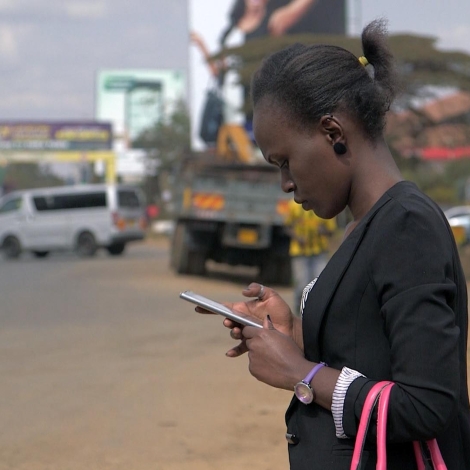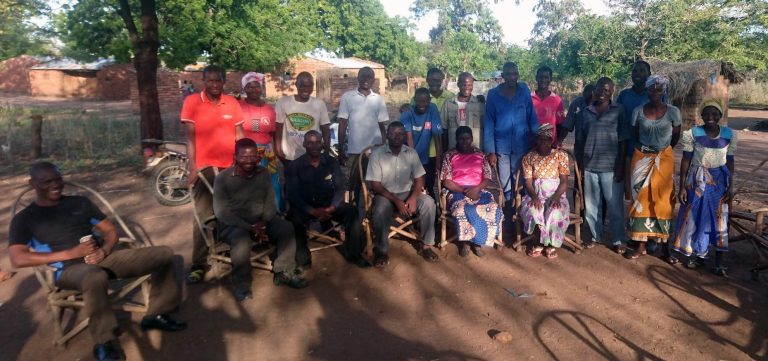Is it possible that aid organizations hand out technologies to Africans that are actually tools of colonialism? And could that also be true of devices that Africans willingly buy and use? Yes, says Dr. Gertjan van Stam, whenever that technology is introduced by outsiders and it does not adhere to “African values.”
Dr. van Stam is a Research Fellow at the Science and Industrial Technology Development Centre in Zimbabwe and formed his views while living and working in sub-Saharan Africa for nearly two decades. He explains in his recently published doctoral thesis, Reflections: A Narrative on Displacement of Technology and Meaning in an African Place.
“My work shows that introductions of technology can be unhelpful in the local African community if there is no connection with African meaning making. Technology –introduced without respect for African values and meaning making becomes part of a supra-colonial relationship between the West and Africa,” Dr. van Stam says.
Dr. van Stam argues that there are five African values to which technology should conform.
“Through the Big Five, I aim at providing a lens through which to understand the locally embedded
meanings when living, working and interacting with technologies in sub-Saharan Africa,” Dr. van Stam says. “They proved critical to derive a contextual understanding of African stories of technology and society, and how practitioners interact in relational networks, locally in African places, and with foreigners beyond Africa.”
Five African Values
Here they are, with explanations adapted from the book:
- Ubuntu, or ‘communal love.’ Ubuntu signifies good behavior, grounded in virtues like affirmation, compassion, and solidarity. Ubuntu provides guidance on how to balance rights and duties. Ubuntu inspires Africans to look out for the interests of other human beings to ensure a communion-in-otherness, while making sure that the community’s needs are fulfilled.
- Oratio, or ‘communicating embodied knowledge.’ In oratio, knowledge is embodied in people, and it is validated through conversations. Conversations require people to be together and meet face-to-face, and in doing so they can assess the truthfulness of the communication.
- Relatio, or ‘relational resource allocation.’ Relatio keeps track of social accounts. It defines an economy in which relationships hold the highest value. Transactions guided in relatio aim to establish and sustain human relationships.
- Dominatio, or ‘maturity.’ In dominatio, interactions are embedded in an understanding that wherever they are, people live together, intrinsically bound by humanness. Dominatio provides the means for dealing maturely with the past, through forgiveness, and the future, through declarations and promises.
- Animatio, or ‘the continuous present moment.’ Animatio is the setting that honors family connections within one’s community, the greater society, the continent, and humanity at large. It connects to the environment, defines and regulates ethical behavior and measures and evaluates work.
How useful is it to talk about ‘African values’ given the cultural diversity of Africa? Dr. van Stam mentions the problem early in the book, acknowledging the cultural differences with a mention of spot tests he carried out on his five values.
“In the book, I qualify where I have tested the premises (Southern Africa, Eastern Africa, and some countries in Western Africa). Of course, that cannot have been everywhere, but I provide for examples from many places, after more than 17 years of residing and traveling in Africa,” Dr. van Stam says.
Ultimately, the thesis presents an academic frame, which is, admittedly, an “underrepresentation of the complexity and diversity of reality,” Dr. van Stam says.
Examples of Technology With Little Meaning
A list of technologies that ignore African values might be a list of most technologies, in Dr. van Stam’s opinion.
“There is very little technology development that adheres to the ‘big five’ principles, due to minimal local research and the distraction to amend and support ‘Western initiated research,’” Dr. van Stam says. “I propose that is why the applicability (and acceptance) of existing technologies in Africa is hampered.”
The book raises a few cases in point, including the implementation of TCP/IP (transmission control protocol/Internet protocol), Microsoft Windows in particular. Other examples may be mobile phones, which can only be used between individuals rather than whole communities, and Internet networks that are built following long established colonial (shipping) routes, Dr. van Stam says.
Examples of Technology that Adheres to the Big Five
Examples of technologies that do adhere to the African values that Dr. van Stam proposes are so scant that he focuses instead on the process of technology creation to exemplify his points.
“The process calls, for instance, for community conceptualized technology, community requesting its creation, the community to introduce the technology to the relevant authorities, the community to lead the co-creation in its environment, community members to present ideas, technologies and use first, and the community giving permission for the dissemination of co-developed technology,” Dr. van Stam says.
Two examples did come to mind, however. The book refers to mobile money transfers (remittances) as technology that allows for the expression of love. And the development of technology for television white spaces might trend toward greater meaning in an African context, Dr. van Stam says. For more on white spaces, Dr. van Stam suggests the article Bridging Africa’s Broadband Divide, published in IEEE Spectrum in 2016.
Tips for Designing Meaningful Technology in Africa
Helpfully, the book also includes insights for technologists into how to avoid problems and create technology that meshes with Africa. Dr. van Stam made a quick list of design tips for E4C’s readers.
- Sensitivity to The Terrible Three. The three are orientalism, imperialism and colonialism. Social sustainability is precarious when any of the Terrible Three influences the processes of conceptualization. The Terrible Three minimize the thought existing in Africa and makes Africans subjects instead of able agents.
- Introduction to the Age of Super-Colonialism. The social justice of an externalization of resources from the community to ‘outsiders’ and/or the basis of a privilege accruing to ‘outsiders’ can be assessed accordingly.
- Training in Paradigm Switching. The meaning of a technology depends on the paradigm from which one interprets reality. The alignment of an intervention with local meaning-making relates to a measure of conflicts.
- Understanding the Big Five. Designers should see them as virtuous engines for respectful development.
“I try to make the insights practical, personal/human and doable, and show how it is uncommon to the dominant worldview (of course, framed as a philosophical exercise). I show how African realities cannot be defined out of the images from the West. If one does so, also technology becomes constrained by how the West is. Solutions ‘in Africa’ cannot be found in such a manner. It needs faith in the ability of Africa to define technology,” Dr. van Stam says.
For more, please see Dr. van Stam’s doctoral thesis, Reflections: A Narrative on Displacement of Technology and Meaning in an African Place, available free of charge at the link.

